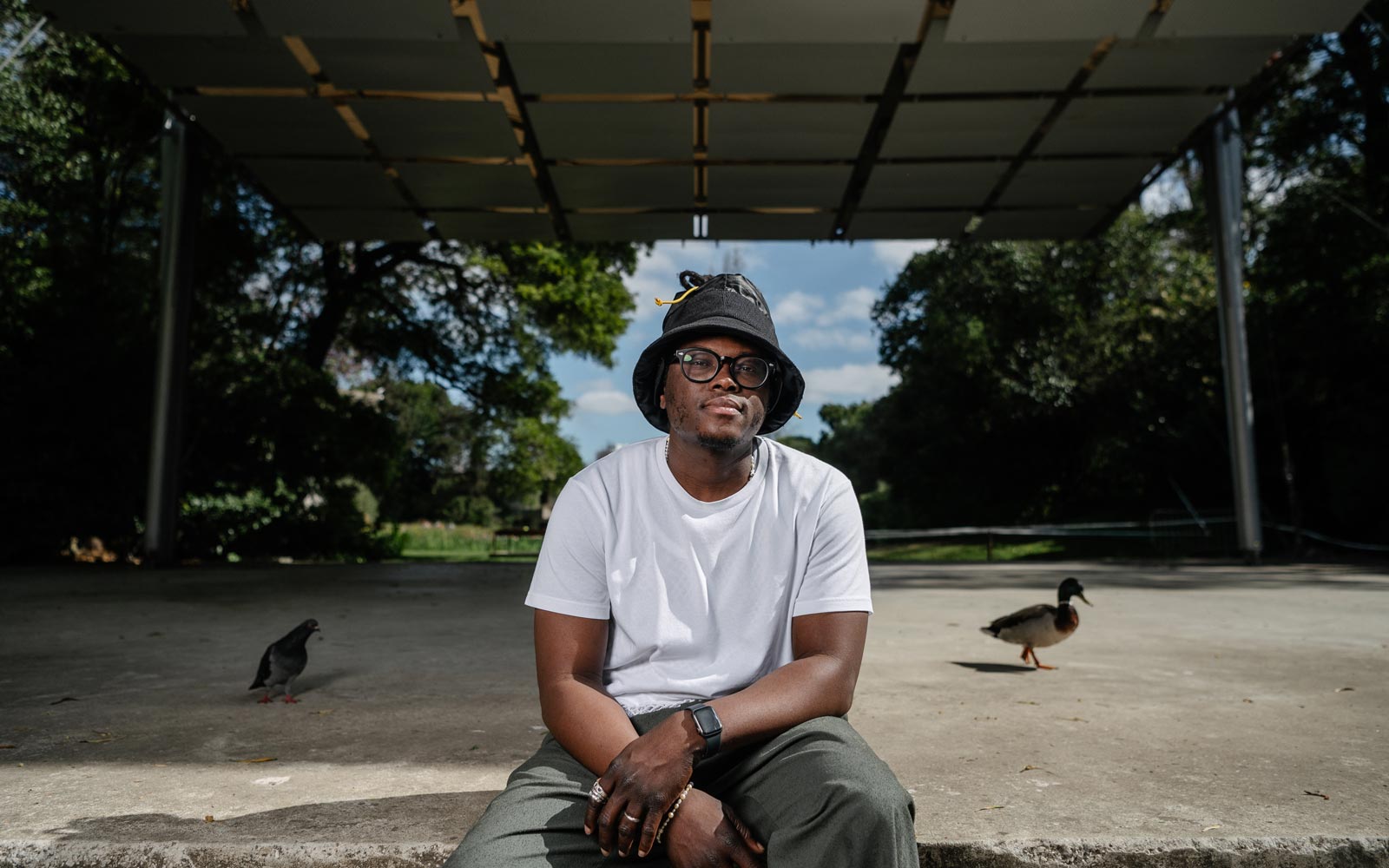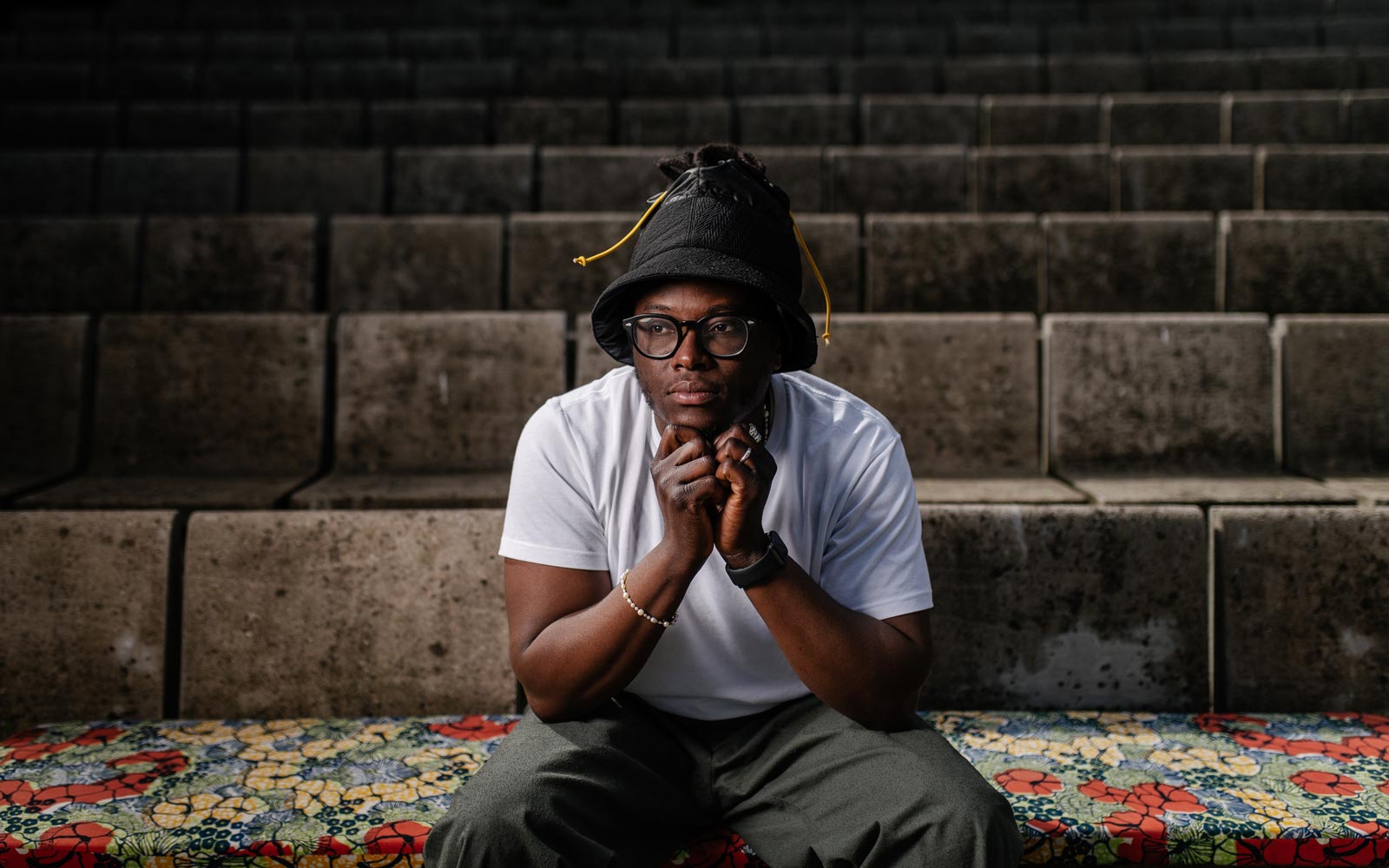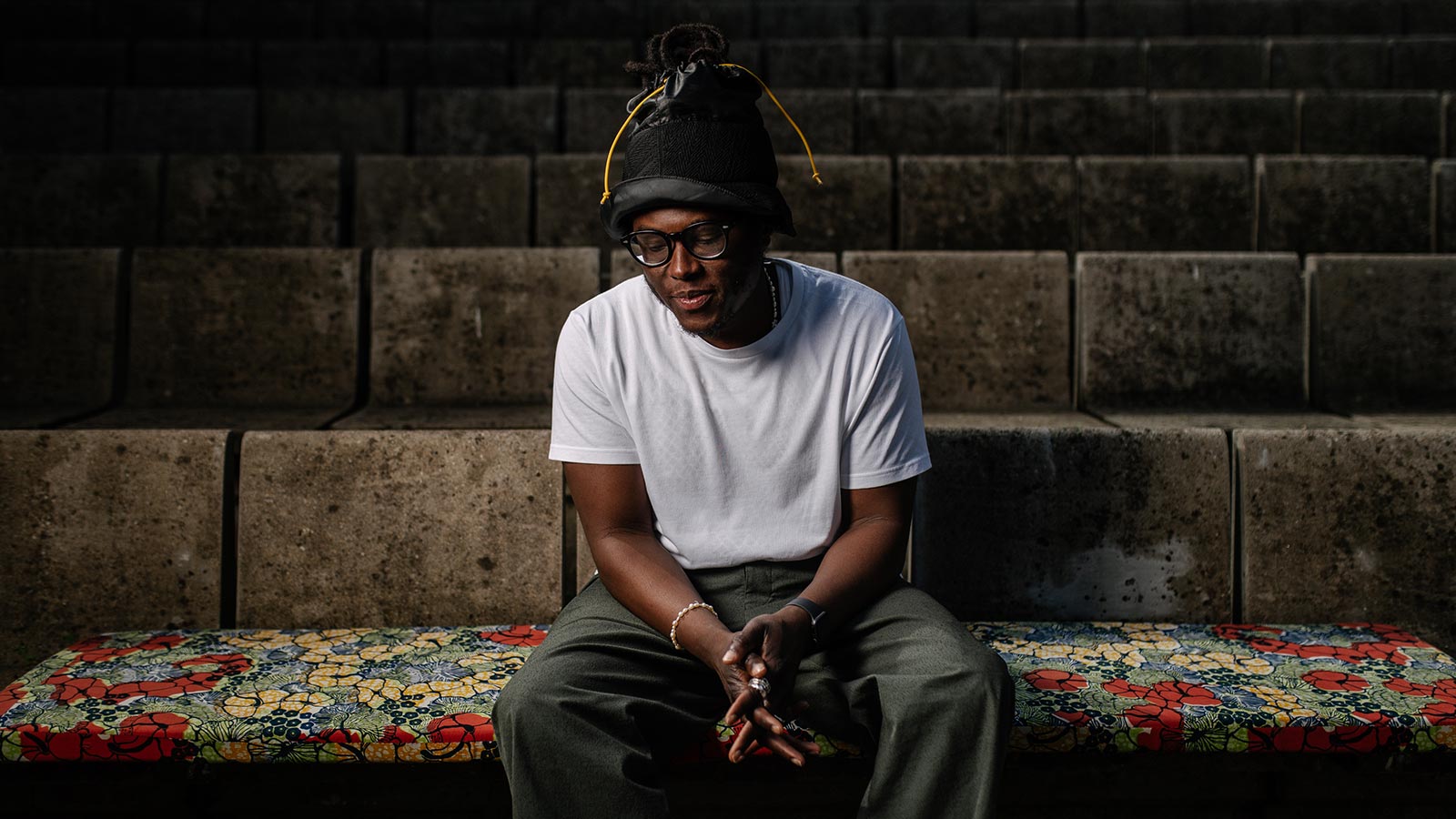‘To be black and to be alive now’
How did you come up with the project Black Corporeal?
It came up because I was considering what does it mean to be black and to be alive now. This was pre-COVID, probably about 2017. I wanted space to consider, as a black person living in Europe, how do we exist in spaces. How we take up space, what are the stories that attach to us moving to Europe, the multiple ways that we’ve come here and celebrating that, because often there’s not a celebration, but the reoccurring themes of negative stereotypes with blackness. I wanted to embrace all of that.
In fact, it started with some questions: what would it mean to go to different cities, speak to different people? What it means to be alive today? What it means to be black in terms of the corporeal? What is a body? How does it perform in spaces, both your interior world and the physical world?
The project is in various cities in Europe, seven in total. What was the criteria for the selection?
To consider how we’ve come to Europe, you have to consider that water plays a big part in that. So, you have to think about pre-colonial movement, colonial movement and also the way we live now. The way into each city was using the port: Rotterdam, Barcelona, Lisbon, Liverpool, Antwerp, Hamburg, and Marseilles.
Cities with black communities?
Yes! And water was the way in. Then thinking about what are the things that we brought with us. Music also became a big part in that. How do we use music now to gather, to celebrate, to lament, to grieve?
Back home, when there’s a gathering or a wedding or funeral, there’s the part where whoever is leading the procession will tell a story and they’ll break out into a song. Those cultural activities or moments that we sort of have moved on with in Europe then became another side of that. The best way to think about that is to look at choirs, how people come together to sing songs in harmony.
These communities in different cities and how the music evolves through them…
Exactly, that’s why the chorus became a part in that.
The title of the project – ‘Chorus in Rememory of Flight’ – is taken from a subtext of a book called The Big Drum Ritual of Carriacou, and I think it’s called ‘Praisesongs in Rememory of Flight’. So that is from a book that looks at how you tell stories through folklore, how you listen and how music and old storytelling plays a big part in African culture.
‘Chorus in Rememory of Flight’ to me looks at the idea of coming together and singing the same songs over and over again, and what that does to the body, to the psyche, to you, spiritually and physically. The “flight” then speaks to the movement, water, contemporary movement, flight, just all the ways we’ve come in, and the “rememory” is the listening practice.
Listening to people’s stories without any pre-conception: just tell me about how you came here, what you do, how have you been living your life here and what are the stories you can tell me. They can be true. They can be fake. It doesn’t matter.
Do you have any expectations about what Lisbon can add to the project?
When I started the project, I had expectations. But the more I’m visiting different cities, the more I realise that each country has its own way of forming its culture and its own way of inviting people into their spaces. So, I had to do away with expectations and be willing to embrace the unknown because a lot of these cities, I haven’t been there before. Often the best moments are the ones that we didn’t plan to have.
These cities fuel the project. How do you view the relationship between both the live performances and the film that you’re producing?
I started off as poet, so performance, poetry, page poetry, that’s where my practice started.
Performance has been a big part of my work, but also, back home, the idea of telling stories and layering that with a song is part of our culture.
In this particular project, after speaking to so many people and with the different ways they provided an offering: in some cities people will dance, people will take me to the seaside or the train station for their performance, some will invite me into their home, we would have tea and we would just talk, and some people would read poems. My team and I gathered all these performances and all of that will be in the film.
I’ve also written choruses that choirs will sing in some cities; then are the poems which are like meditations on each city. Kind of just after being there thinking about: what did I take from that? When you think about the expanse of the project or the multiple forms the project would take in, it makes sense that some side of it would be performing, some side of it would be the film, and some would be in the archive for people to listen to in the future.
The performance element is also a way of having a dialogue with the city and inviting the city to sit with us. The choir in each city, it’s almost like me having a dialogue with the city, with the local black community: I read some poems, they sing a song in response and the audience participate together. So, that’s the city, the relationship between all those media.

Identity and memory are such subjective concepts, and the African diaspora is so diverse in its origins and destinies, at the same time there’s a predominance of Eurocentric and Western narratives.
How can this project contribute to the emergence of a black diasporic consciousness?
That’s a big question! In short, I don’t know.
The hope is that in listening and in creating this archive that there will be a through-line, or something would emerge that we can think with each city, and hopefully, you know, my expression, or my gesture of this work is just one tiny element. The hope is that other communities and other spaces will take it on, and it would exist after the fact.
One of the things that I’m thinking of is learning as I’m going through the cities with the interviews that are being conducted and me conducting with people that are in the city, there is a learning process that’s happening both with me and the people that are participating, and also them meeting each other and learning about themselves. I’m learning about them. So, there is a community almost – I don’t want to say a global community –, but like a community is being formed around the thinking.
I don’t want to say it’s less about the work for me, it is the work, but it’s more about how you’re encountering people, these encounters and what does these encounters mean after the fact. I hope there will be some sort of shift, because if I can allow 500 people to see the work, they can think together and there’s a dialogue after, then the job is done. If there’s two people, the job is still done.
You were born in Sierra Leone and live in London. How did this research contribute to your own identity? Do you feel it changed?
For me, the idea of going around and collecting stories, ideas, concepts, and meeting people, it’s almost innate. Being Krio in Sierra Leone – the word “Krio” came from the word “a kiri yo” which means “aimless yet satisfied, wondrous”. There’s this way of you are neither here nor there, you’re always moving, in this living space.
The idea of me going around and meeting multiple identities and meeting multiple people is enriching my life, and I think it enriches my practice. It is very heavily collaborative between me and the people that I meet, whoever I encounter. And it’s heavily dependent on what they offer.
Being Krio is kind of like a lifelong encounter. I think being human, that’s how we grow, that’s how we evolve in the sense that the more we encounter things, the more we learn, the more we re-learn, unlearn, we grow by that.
What is going to be the result, to be presented at the Barbican later this year?
It is a multiple-screen installation. The thing about the Barbican Curve, it’s almost like a long pathway, a very long curve, it’s called ‘The Curve’ for that reason. The aim is to create a space of encounter where people can come into the space and almost come with me into that journey of how I’ve encountered these narratives and these stories. Because that’s the end.


